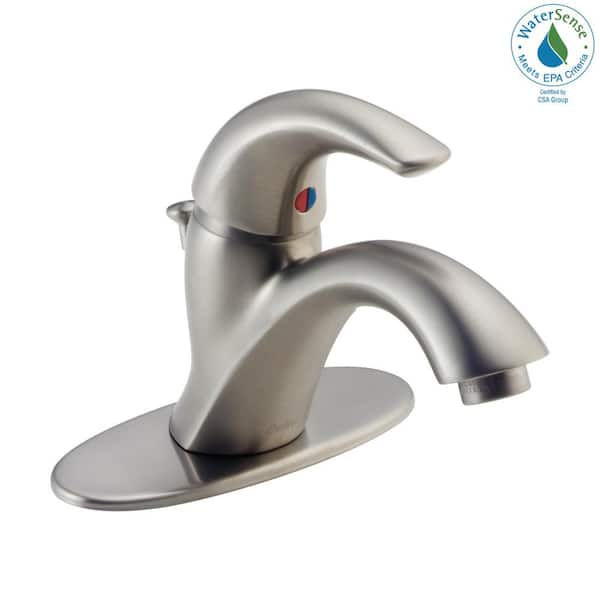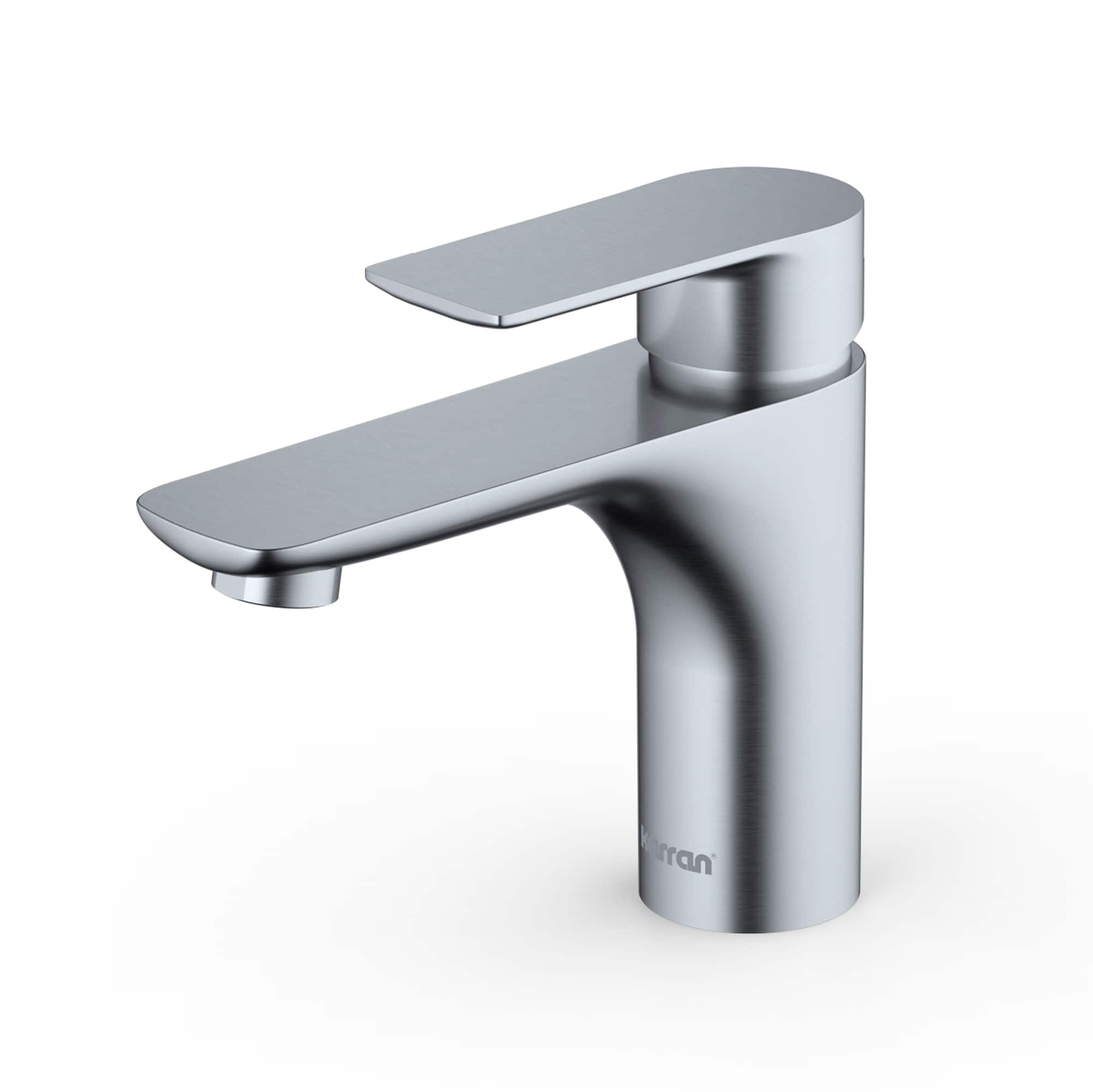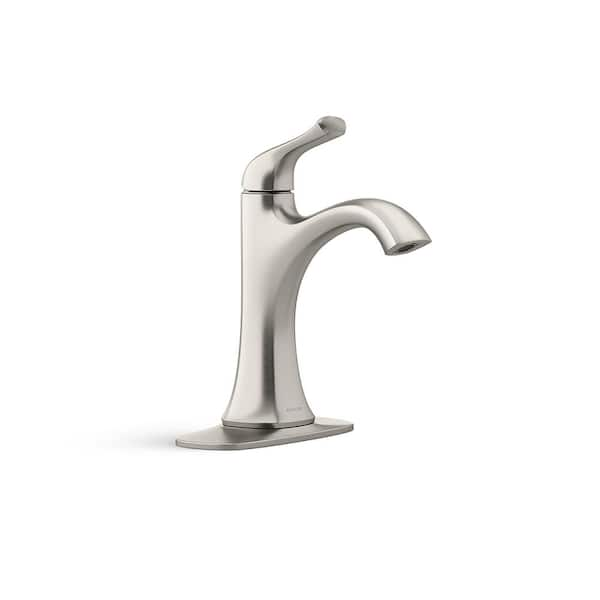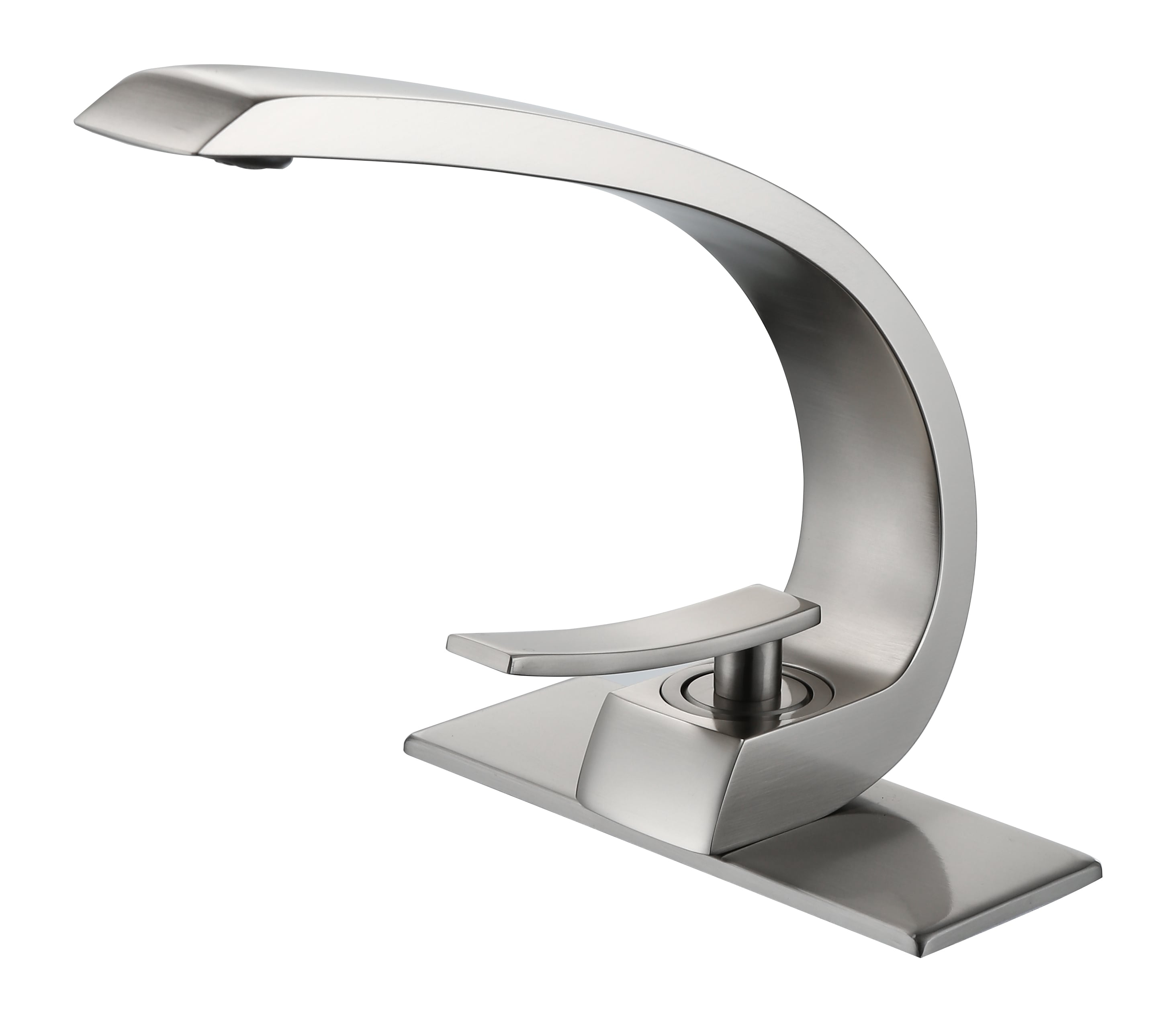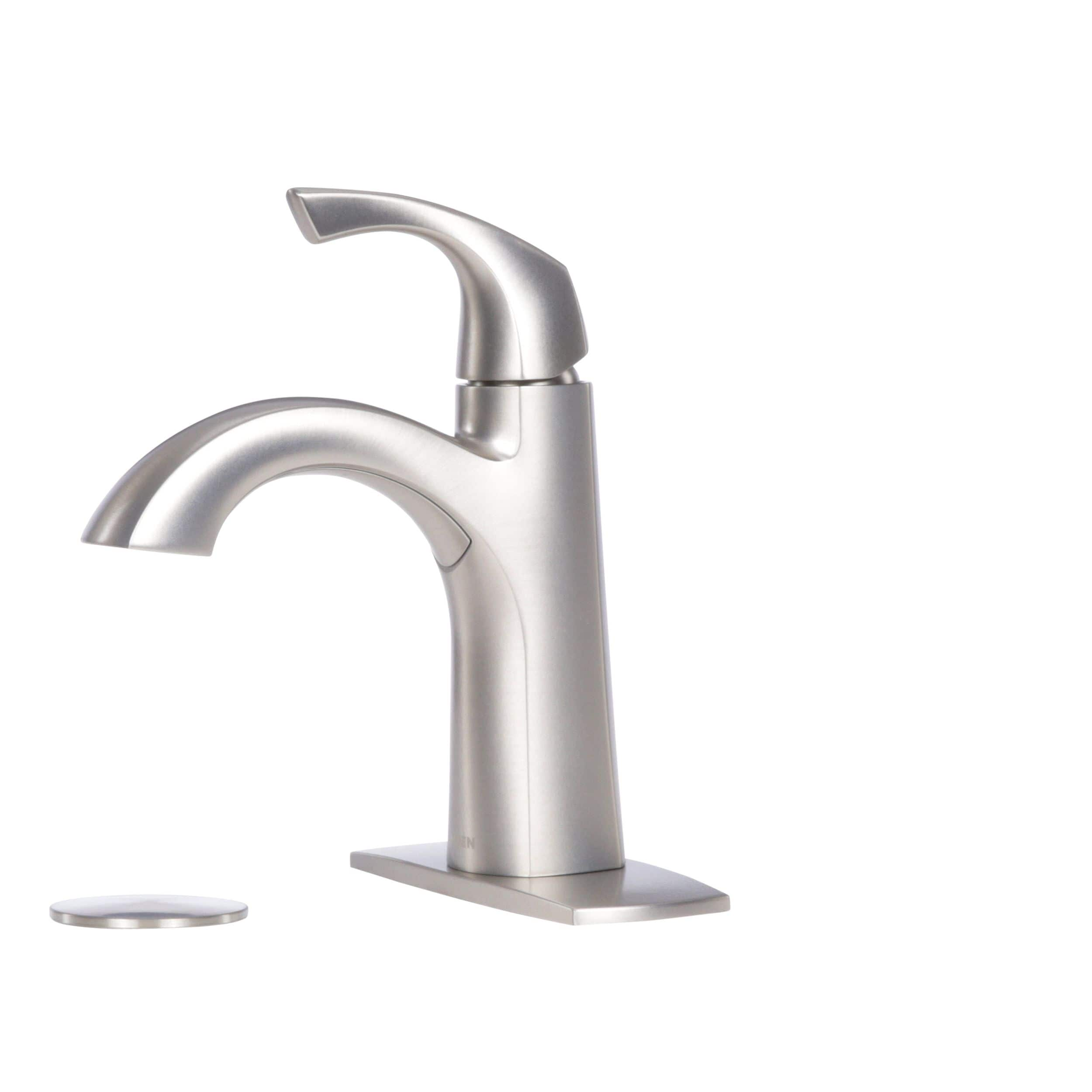The Advantages of Stainless Steel Bathroom Faucets
Stainless steel bathroom faucets have gained popularity in recent years due to their numerous advantages.
- Durability. One of the key benefits of stainless steel is its durability. Unlike other materials, stainless steel is resistant to rust and corrosion, making it an excellent choice for bathroom fixtures. Additionally, stainless steel is easy to clean and maintain, saving you time and effort in the long run.
- Versatility. Another advantage of stainless steel bathroom faucets is their versatility. These faucets come in a wide range of styles, finishes, and designs, allowing you to find the perfect match for your bathroom decor. Whether you prefer a sleek and modern look or a more traditional aesthetic, there is a stainless steel faucet to suit your taste.
- Environment Friendly. In addition to their durability and versatility, stainless steel bathroom faucets are also environmentally friendly. Stainless steel is a recyclable material, making it a sustainable choice for your bathroom. By opting for a stainless steel faucet, you are contributing to a greener future and reducing your carbon footprint.
- Hygienic. Furthermore, stainless steel is a hygienic material for bathroom fixtures. It is non-porous, which means it resists the growth of bacteria and germs. This makes stainless steel faucets a safe and hygienic choice for your bathroom, ensuring the well-being of your family.
- Longevity. Last, stainless steel bathroom faucets are known for their longevity. The high-quality construction of these faucets ensures that they will withstand daily use and maintain their functionality for years to come. Investing in a stainless steel faucet is a wise choice that will save you money in the long term, as you won’t have to replace it frequently.

Single Hole Stainless Steel Faucets for Your Bathroom
When it comes to selecting a bathroom faucet, the style and design play a crucial role in enhancing the overall aesthetics of your bathroom. Single hole stainless steel faucets have become increasingly popular due to their sleek and minimalist appearance. This article will guide you through the process of choosing the right style of single hole stainless steel faucet for your bathroom.
Before making a purchase, consider the overall theme and decor of your bathroom. If you have a modern or contemporary bathroom, a single hole stainless steel faucet with clean lines and a polished finish will complement the sleek and minimalist design. On the other hand, if your bathroom has a more traditional or vintage look, opt for a single hole stainless steel faucet with elegant curves and a brushed finish.
Another factor to consider is the functionality of the faucet. Single hole faucets are compact and space-saving, making them ideal for smaller bathrooms or powder rooms. Additionally, some single hole faucets offer features such as a pull-out sprayer or a waterfall flow, adding a touch of luxury to your bathroom experience.
Consider the height and reach of the faucet. Depending on the size of your sink and the clearance needed, choose a single hole stainless steel faucet that provides adequate space for washing hands or filling containers. A faucet with a taller spout can be beneficial if you have a deep sink or frequently wash larger items.
Furthermore, pay attention to the handle design. Single hole stainless steel faucets typically come with a single lever handle or a joystick handle. The lever handle offers ease of use and precise control of water temperature and flow, while the joystick handle adds a unique and contemporary touch to your bathroom.
How to Install a Single Hole Stainless Steel Faucet
Installing a single hole stainless steel faucet in your bathroom can be a straightforward process if you follow the right steps. This article will guide you through the installation process, ensuring that you can enjoy your new faucet in no time.
Before starting the installation, gather all the necessary tools and materials. You will typically need an adjustable wrench, a basin wrench, plumber’s tape, and a bucket or towel to catch any water. Make sure to turn off the water supply to your bathroom before proceeding.
Start by removing the old faucet if you have one. Disconnect the water supply lines using an adjustable wrench and remove the mounting nuts that hold the faucet in place. Once the old faucet is removed, clean the sink surface thoroughly to prepare it for the new faucet installation.
Next, take your new single hole stainless steel faucet and place it into the mounting hole on your sink. Make sure that the faucet is aligned properly and centered. Tighten the mounting nut underneath the sink using a basin wrench to secure the faucet in place.
Once the faucet is securely attached, connect the water supply lines. Apply plumber’s tape to the threaded ends of the supply lines to prevent leaks. Use an adjustable wrench to tighten the connections, ensuring that they are snug but not over-tightened.
After the water supply lines are connected, turn on the water supply to your bathroom. Check for any leaks around the connections and tighten them if necessary. Let the water run for a few minutes to flush out any debris or air from the lines.
Finally, test the functionality of your new single hole stainless steel faucet. Turn the handle to check the water flow and temperature. Make any adjustments if needed. Enjoy the convenience and beauty of your newly installed faucet.
Maintenance Tips for Long-lasting Stainless Steel Bathroom Faucets
To ensure that your stainless steel bathroom faucet remains in excellent condition and stands the test of time, regular maintenance is essential. Here are some maintenance tips to keep your stainless steel faucet looking and functioning at its best.
First and foremost, it’s crucial to clean your stainless steel bathroom faucet regularly. Use a mild soap or a mixture of warm water and vinegar to gently clean the faucet and remove any dirt or grime. Avoid using abrasive cleaners or scrub brushes, as they can scratch the surface of the stainless steel.
After cleaning, thoroughly rinse the faucet with clean water and dry it with a soft cloth. This step is especially important in areas with hard water, as mineral deposits can cause staining or damage to the stainless steel finish. Regularly wiping the faucet dry after use can help prevent water spots and maintain its shine.
In addition to regular cleaning, it’s essential to pay attention to the aerator of your stainless steel faucet. Over time, mineral deposits can accumulate in the aerator, affecting water flow and pressure. To clean the aerator, unscrew it from the faucet using pliers or an adjustable wrench, and soak it in a mixture of warm water and vinegar. Gently scrub away any debris or buildup with a soft brush, then rinse and reattach the aerator.
To prevent water leaks and maintain the functionality of your stainless steel faucet, regularly check the connections and fittings. If you notice any signs of leaks, such as dripping or pooling water, tighten the connections or replace any worn-out seals or gaskets. Promptly addressing leaks can help prevent water damage and extend the lifespan of your faucet.
Last, it’s important to avoid using harsh chemicals or abrasive materials on your stainless steel faucet. Acidic or abrasive cleaners can damage the surface and remove the protective layer of the stainless steel. Stick to mild cleaning agents and non-abrasive cloths or sponges to preserve the integrity and appearance of your faucet.
Enhancing Your Bathroom with a Single Hole Stainless Steel Faucet
When it comes to bathroom design, the choice of fixtures can make a significant impact on both aesthetics and functionality. A single hole stainless steel faucet can be an excellent addition to your bathroom, enhancing its overall appeal and practicality.
One of the key advantages of a single hole stainless steel faucet is its sleek and minimalist design. The single hole configuration creates a clean and uncluttered look, perfect for modern and contemporary bathroom styles. The smooth lines and polished finish of stainless steel add a touch of elegance and sophistication to any bathroom decor.
In terms of functionality, a single hole faucet offers convenience and ease of use. With a single lever handle, you can control both the water temperature and flow with a simple movement. This streamlined operation is not only practical but also enhances the user experience, making it effortless to adjust the water to your desired settings.
Furthermore, a single hole stainless steel faucet is space-saving, making it an ideal choice for smaller bathrooms or powder rooms. The compact design eliminates the need for multiple holes in the sink, freeing up valuable countertop space. This allows you to maximize the functionality of your bathroom while still maintaining a stylish and organized look.
Another advantage of a single hole stainless steel faucet is its durability and resistance to corrosion. Stainless steel is known for its strength and ability to withstand daily use without losing its shine or functionality. This makes it a reliable choice for a bathroom fixture that will last for years to come.
CASAINC Waterfall faucet Stainless Steel and Nickel 1-Handle
HOMELODY Single Handle Bathroom Faucet with 1 or 3 Holes, for Single Hole Vanity, RV, Lavatory Bathroom Sink Faucet Brushed Nickel Stainless Steel,
Deck Mount 304 Stainless Steel Bathroom Faucet Single Handle 1 Hole or 3 Hole Lavatory Faucet Brushed Nickel HOMELODY
Inner Decor Ladd Single-Handle Single Hole Stainless Steel
Esta Single Handle Bathroom Faucet with Lift Rod Drain in Spot
Stainless steel Bathroom Sink Faucets at Lowes.com
Greeley Single-Hole Bathroom Faucet
Related Posts:
- DIY Bathroom Faucet Repair
- Jacuzzi Bathroom Faucet Reviews
- Moen Banbury Single Handle Bathroom Faucet
- Delta Bathroom Faucet Parts Diagram
- Where To Buy Bathroom Faucets
- Rohl Country Bathroom Faucet
- Danze Bathroom Faucet Parts
- Baypointe Bathroom Faucets
- Houzz Modern Bathroom Faucets
- Delta Matte Black Bathroom Faucet
